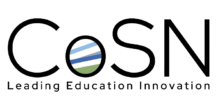Inclusive Education: Creating Learning Experiences For Every Child
Watch the RecordingListen to the Podcast
This edLeader Panel is presented by CoSN and AASA.
Sponsored by ClassLink
When you consider the power education has in launching a child’s future, giving every student the same interactions, services, and access becomes more than just a regulation; it becomes a guiding principle.
During the edLeader Panel “Leading Learning That Truly Meets the Needs of Each Student,” two superintendents discussed how to make equitable learning possible by sharing personal insights and a four-pronged approach to reaching all students from CoSN (Consortium for School Networking) in partnership with AASA, the School Superintendents Association.
Cultivate Inclusivity
Paving the way for equity begins with leaders who embrace differences, allocate resources, adjust policy, and actively monitor the progress of all students, including the smallest populations. “We can’t assume taking care of 95, 98, or 99 percent is OK. We have to get to the one percent,” said Dr. Jason Van Heukelum, Superintendent of Winchester Public Schools (VA).
“It is by far the number-one issue,” said Dr. Jill Louters, Superintendent of New Rockford-Sheyenne School District (ND). With 90 percent of her North Dakota district leaders graduates of the local school system, Dr. Louters said professional learning for board leaders is vital in helping all understand “implicit bias” and being conscious of its extensive effects on administrative decisions.
Providing multilingual liaisons, like those in Winchester Public Schools, can also help families feel heard by district leaders. When “families can speak in their native tongue, they feel more connected to school—no longer a guest, but part owner, like they have stock in the company,” said Dr. Van Heukelum.
Leverage Legislation
Staying abreast of changing guidelines can be a full-time task. Leaning on local advocacy groups or representatives for regular updates saves time and keeps you informed. Winchester’s policy advocate provides regular summaries of the bills, synthesizing those most pertinent to the district. The information is “assigned among leaders” and “put on the board report weekly,” said Dr. Van Heukelum.
When it comes to policymaking, Dr. Louters says never underestimate your legislative power. Superintendents are the boots on the ground and a governmental lifeline for schools. Building meaningful relationships helps superintendents “listen to learn”—staying current while advocating for inclusivity. Many local and state policymakers have little exposure to schools except through their own childhood or family lens. It’s “a great reminder to renew” relationships regularly, she explained.
Practice Purchasing Power
Districts must expand policies beyond legal requirements for disabilities. “Our equity policy requires it,” said Dr. Van Heukelum. Winchester Public Schools has the fifth-largest English language learner population in Virginia. Translation services, for example, need to meet every child’s needs, even for the least-spoken languages, like Farsi.
Knowing your gaps ensures more inclusive plans. Data can be your best friend, said Dr. Louters. Make sure to use several sources, including core achievement, programming, and engagement data. It may take some digging to paint an accurate picture of needs and uncover what may not “necessarily be reportable” in standardized reports, she said. Sharing the information outside of traditional audiences and including members of district financial offices provides context for budgetary requests. It helps superintendents build a business case before going to the board.
Prioritize Professional Learning
As leaders, the calendar can be one of the “biggest levers” you have, said Dr. Van Heukelum. Provide dedicated time for educational leaders to get out of the moment with kids and learn. For instance, provide dedicated professional development days in addition to typical in-service days—but “you’ve got to make sure it’s good. No one likes bad PD,” he said. Consider prioritizing opportunities through a strategic framework aligned with district vision, including diversity and inclusivity.
Overall, nothing can stop passion and enthusiasm. The most effective initiatives begin with a team that believes in its purpose and dedicates the extra time and energy needed to build excitement. Using valid research and industry expertise, including pros outside of education, helps best shape the narrative and get people on board, said Dr. Louters. Ultimately, aligning your work with your beliefs can be the most rewarding and effective way to lead.
Resources
Get started by using technology to bridge access and close the digital divide. Try these resources:
- CoSN (Consortium for School Networking) and Center on Inclusive Technology & Education Systems (CITES).
- The National Educational Technology Plan
Learn more about this edWeb broadcast, Leading Learning That Truly Meets the Needs of Each Student, presented by CoSN and AASA, and sponsored by ClassLink.
Watch the RecordingListen to the Podcast
Join the Community
Super-Connected is a free professional learning community for school superintendents, district leadership, and aspiring district leaders.


ClassLink is a global education provider of identity and analytics products that create more time for learning and help schools better understand digital engagement. As leading advocates for open data standards, we offer instant access to apps and files with single sign-on, streamline class rostering, automate account provisioning, and provide actionable analytics. ClassLink empowers 19 million students and staff in over 2,500 school systems. Visit classlink.com to learn more.
Article by Suzanne Bell, based on this edLeader Panel






Comments are closed.